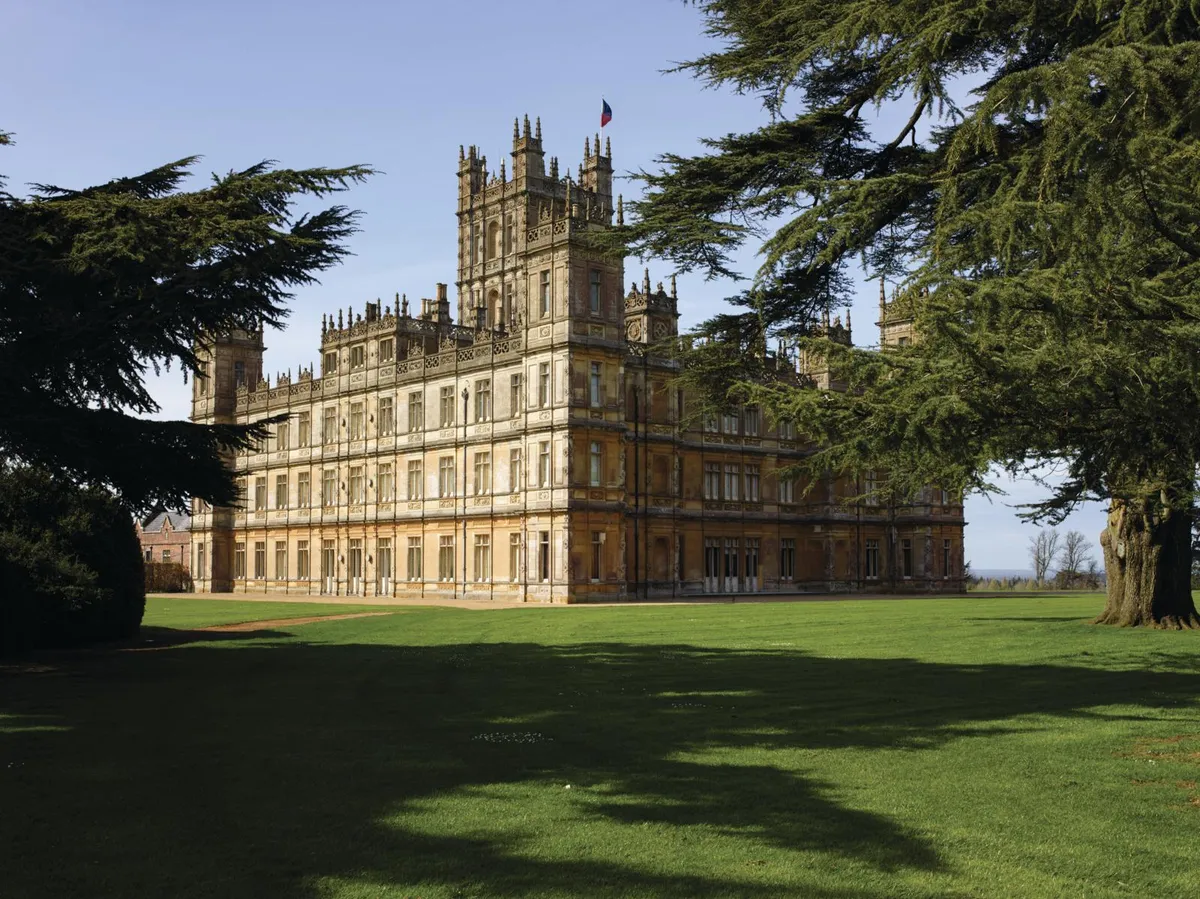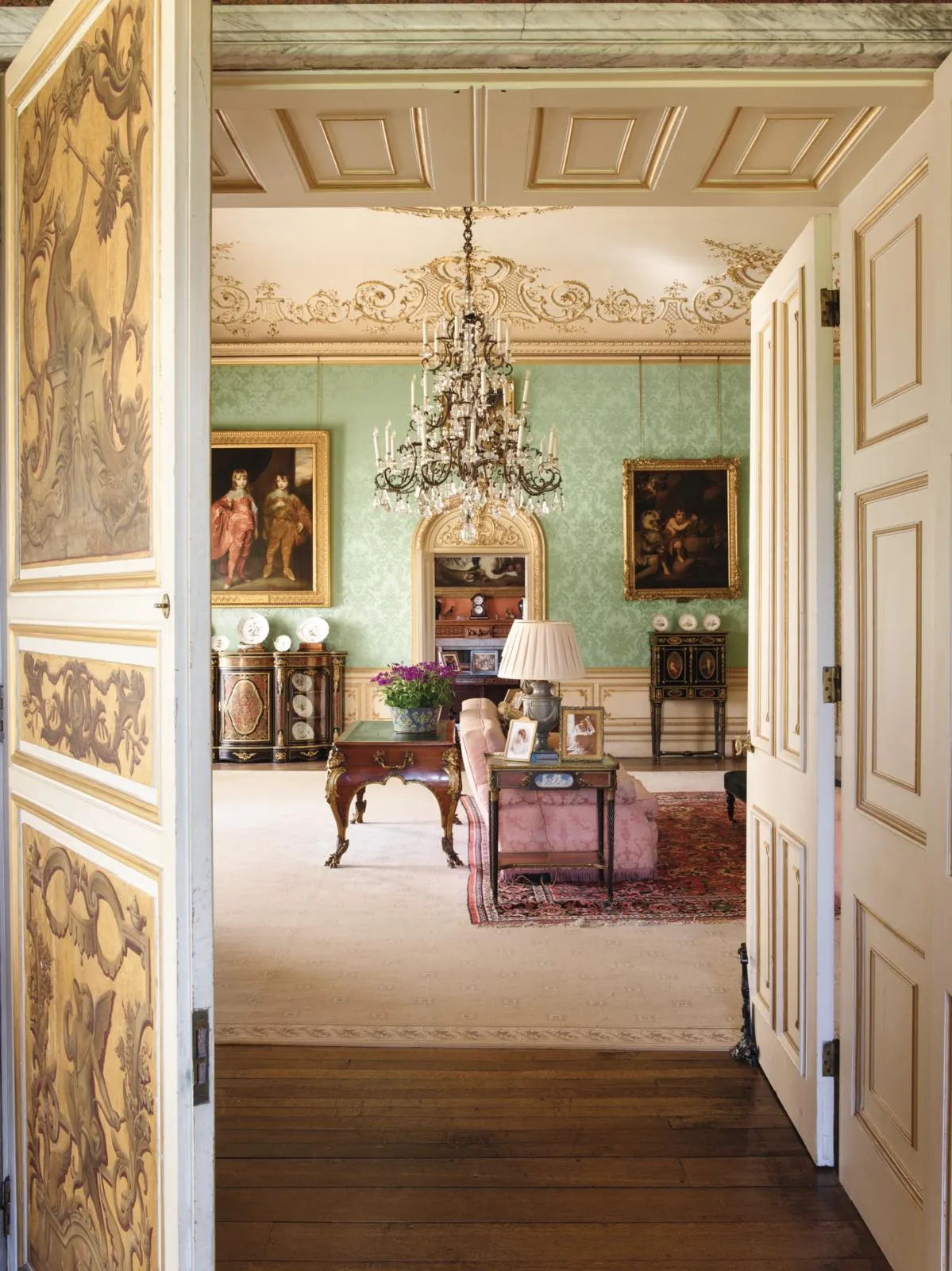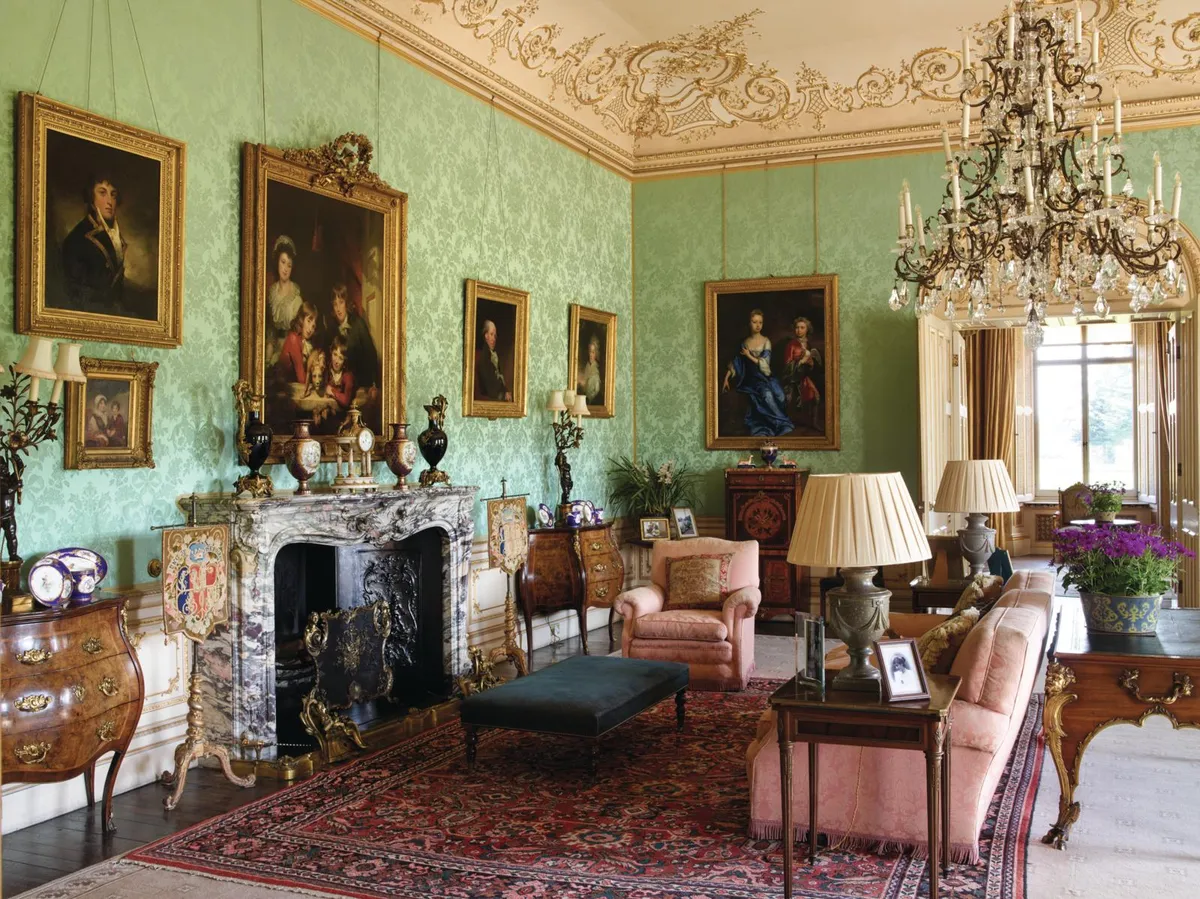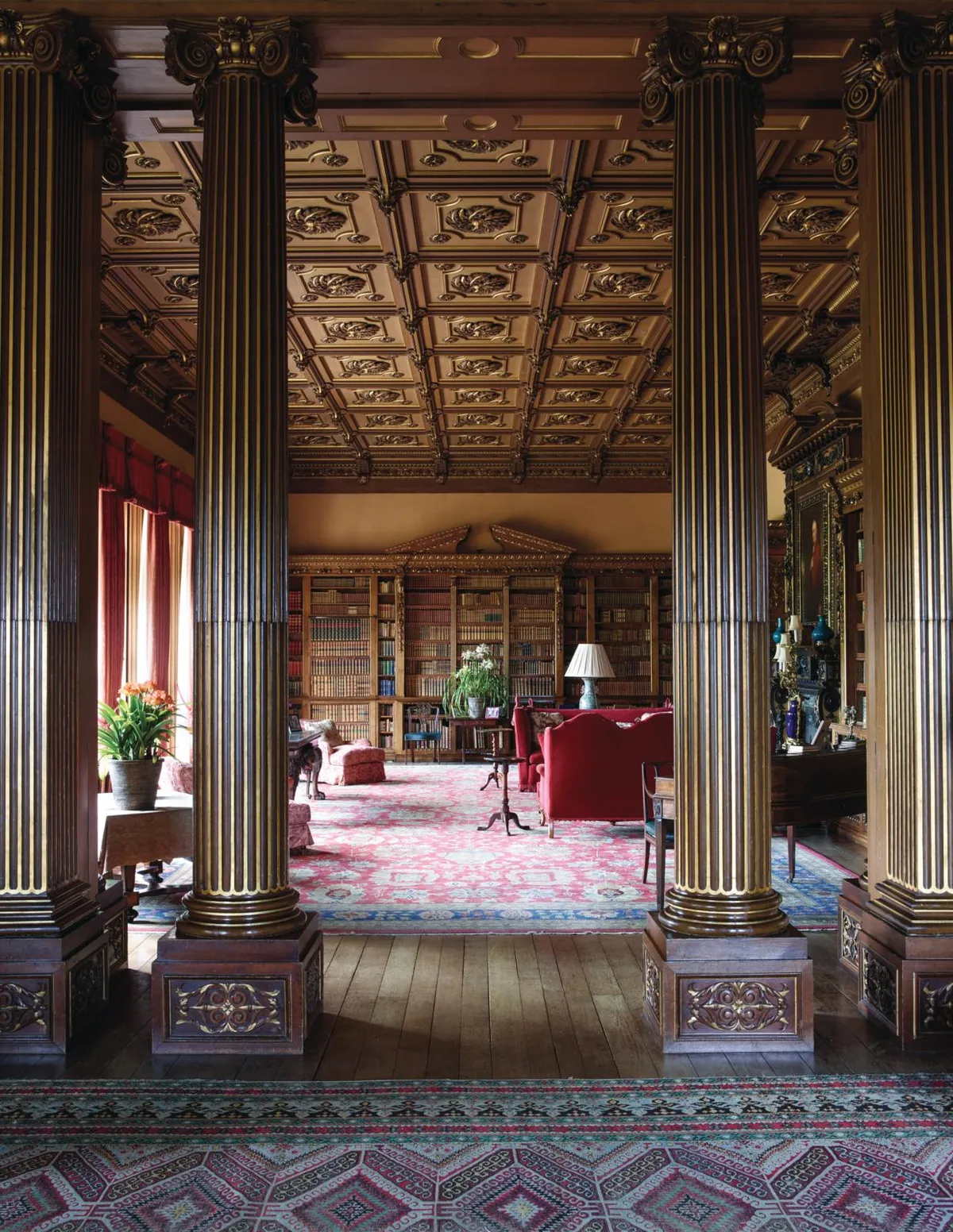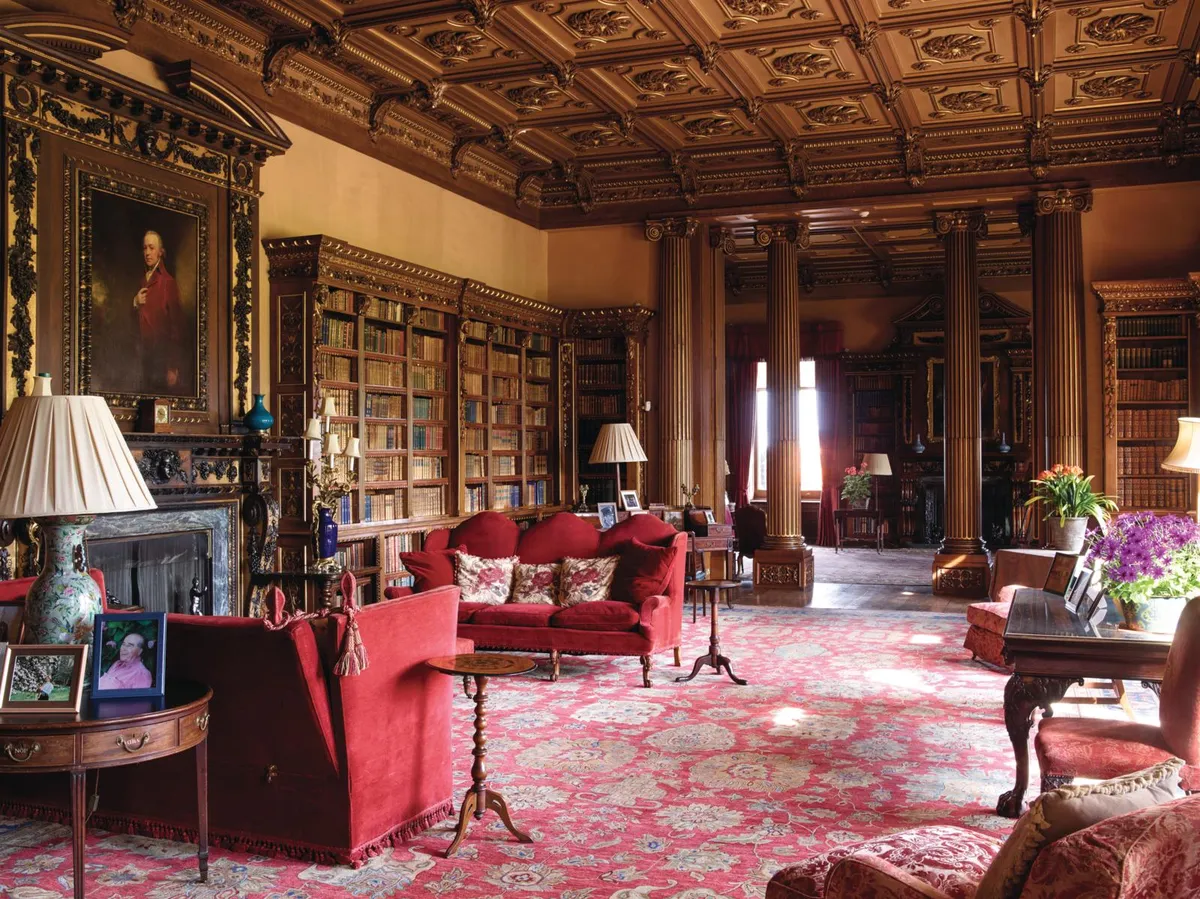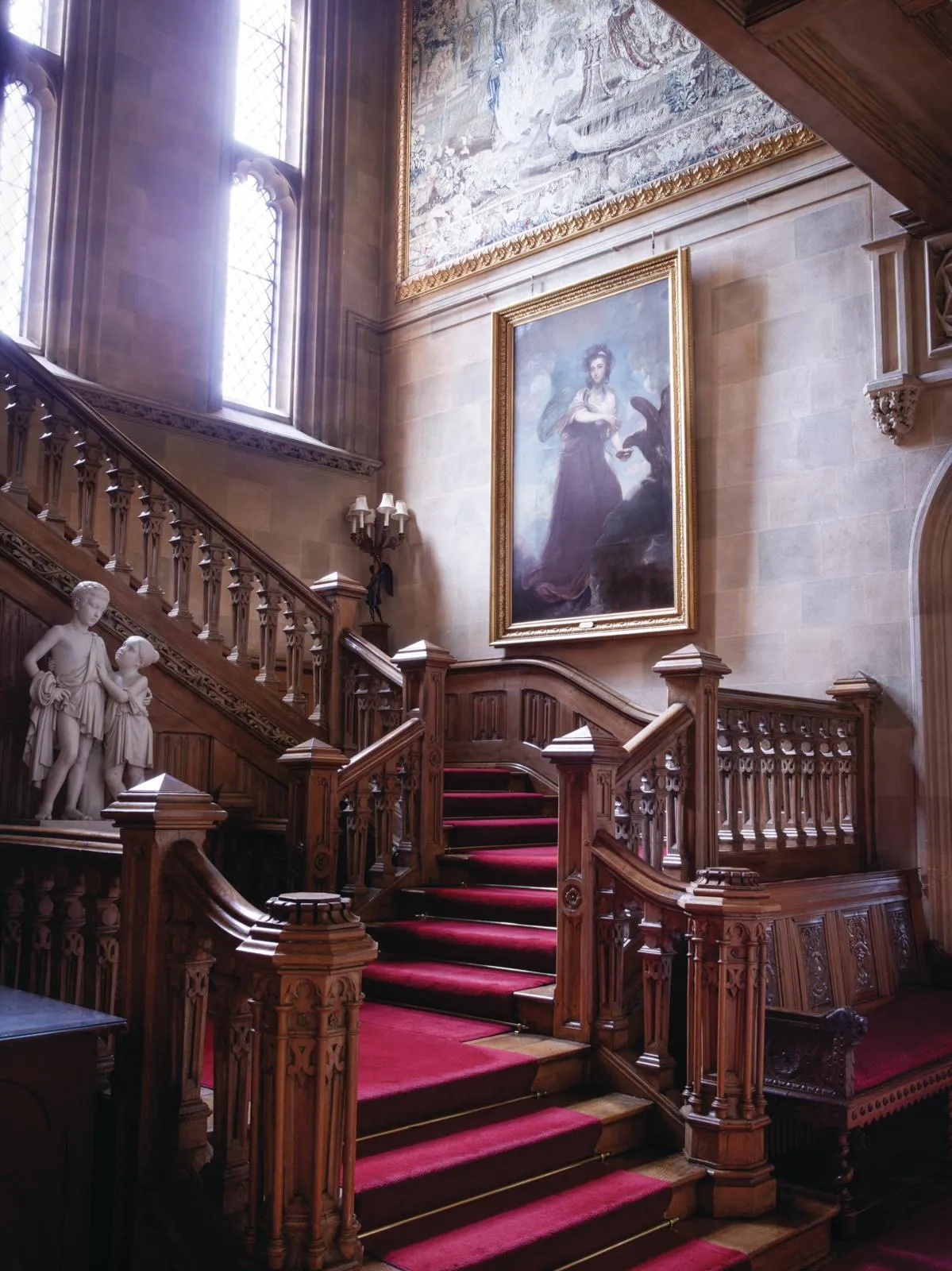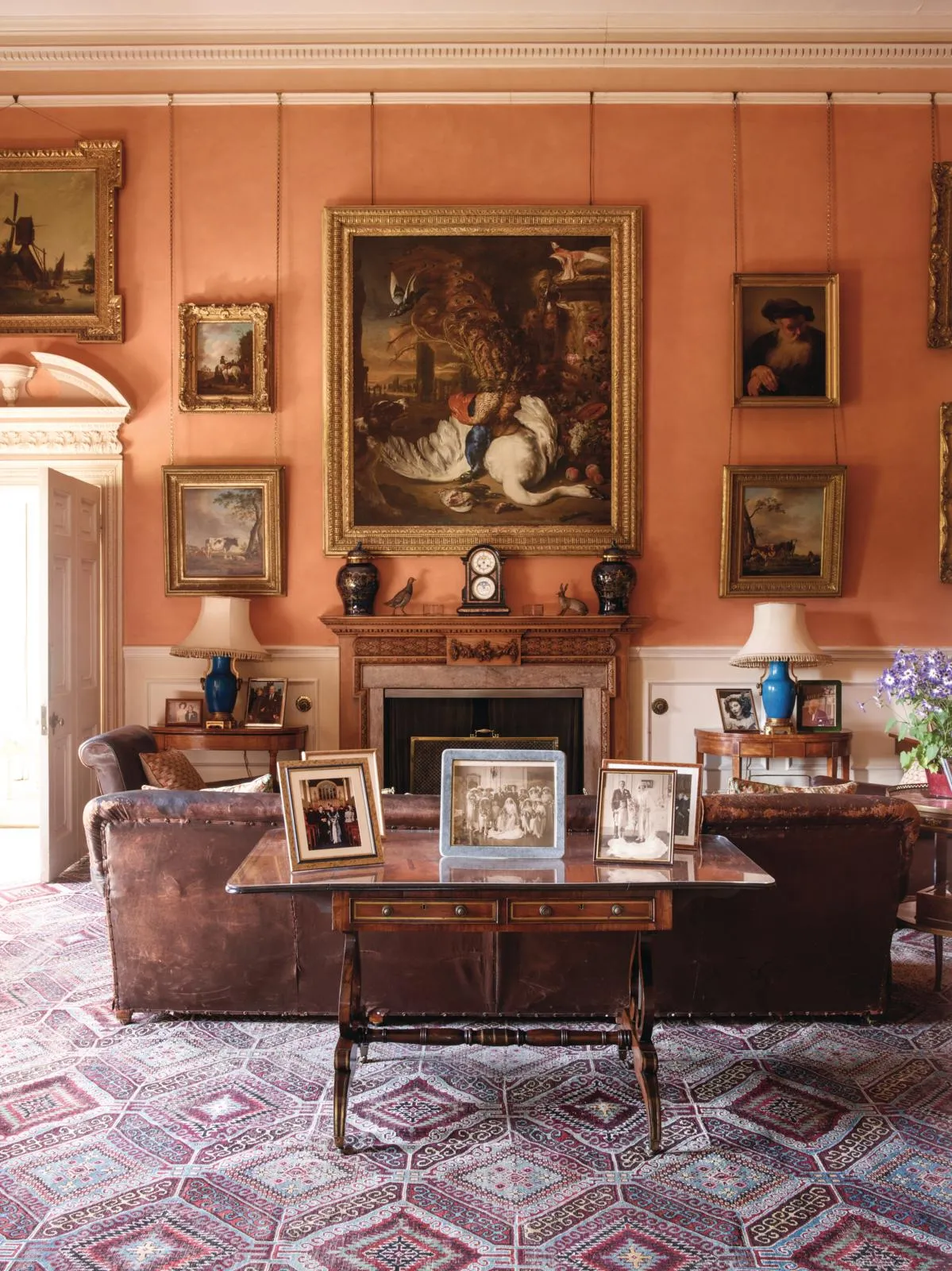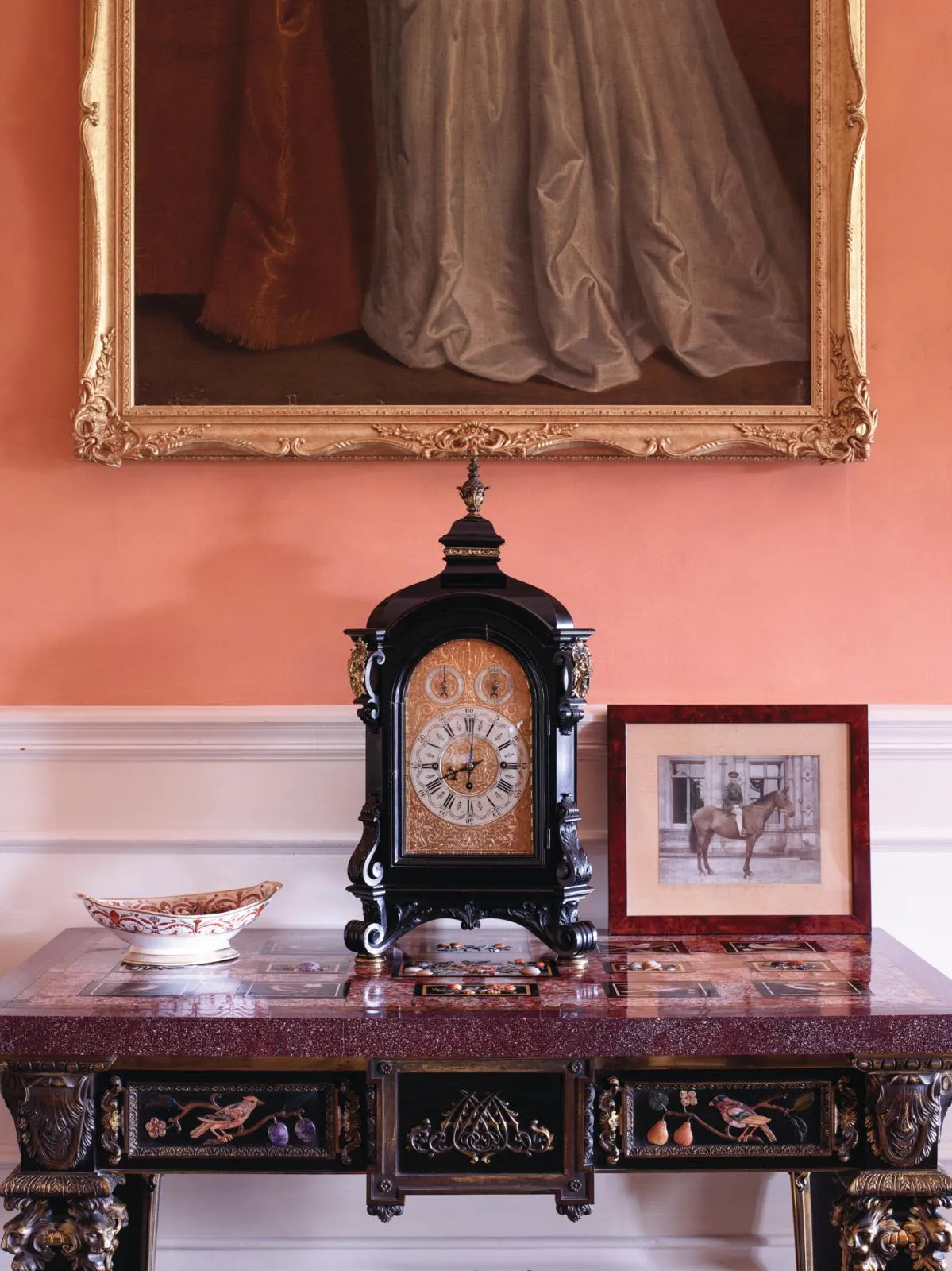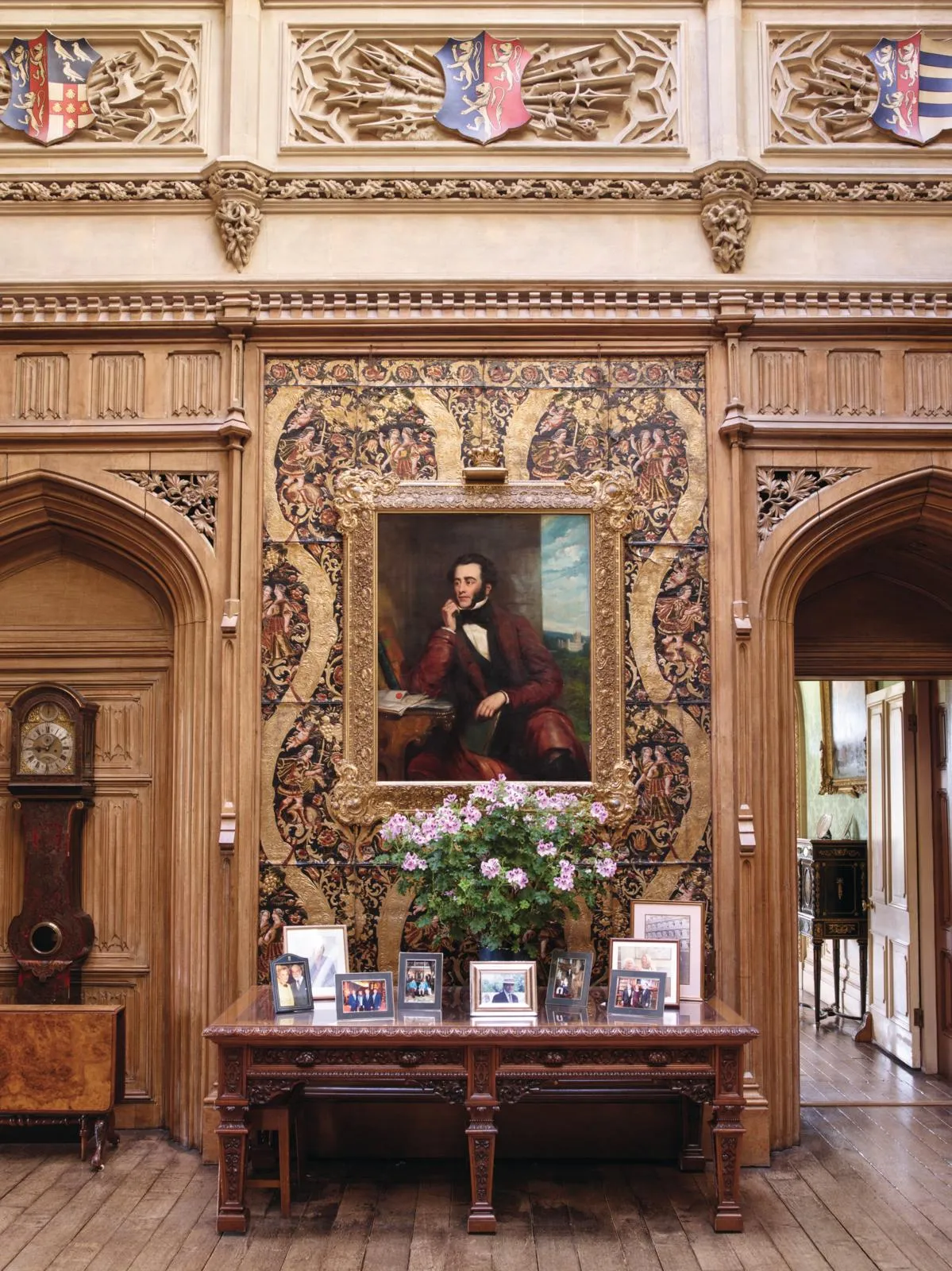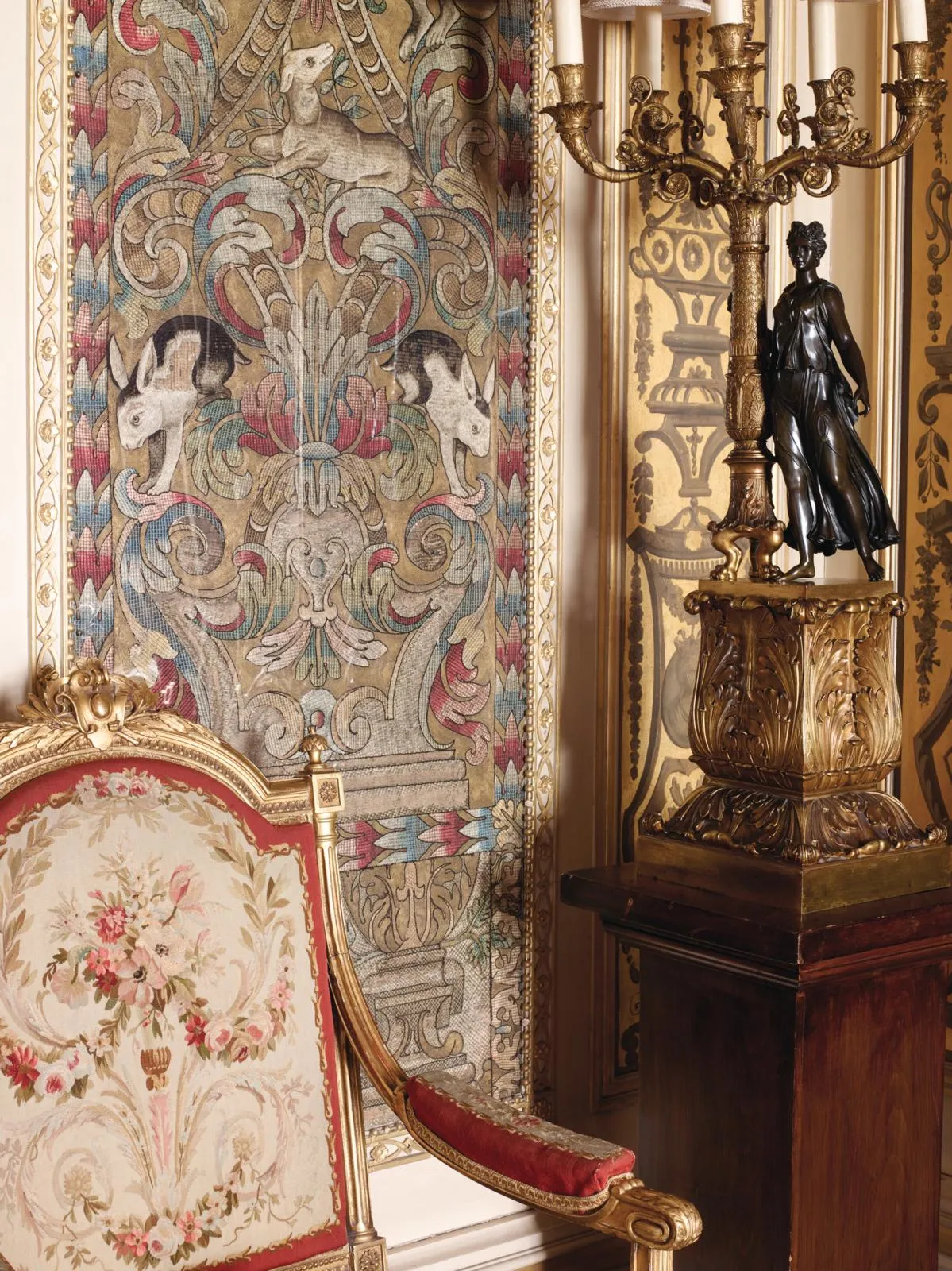'There are around 200 to 300 rooms and between 50 to 80 bedrooms,’ says Fiona, 8th Countess of Carnarvon of Highclere Castle, the ancestral home propelled to fame as the location for Downton Abbey in the popular TV series. ‘I’m never quite sure why we’re not sure, but I think it’s because we don’t know whether to count dressing rooms as bedrooms.’
Highclere has belonged to the family ever since Sir Robert Sawyer, the king’s attorney general, bought the estate in 1679. ‘He wanted to retain proximity to the king, Charles II, who, rather controversially, was living in Winchester with his mistresses,’ explains Lady Carnarvon, adding that the 1st Earl also paid £150 for his title. The house in its present form dates largely from the late 18th and 19th centuries. ‘The 3rd Earl decided to create something completely inspiring and exuberant,’ says Lady Carnarvon.
Sir Charles Barry, architect of the Houses of Parliament, upgraded the earlier Georgian mansion with a Victorian makeover. Inside, some of the rooms were given an opulent Victorian treatment, while others, which were altered less dramatically, still retain an elegant Georgian ambience.
Even so, restraint isn’t a word that springs to mind when you walk around Highclere. There’s an inescapable sense of theatre as you step into the Entrance Hall, designed by George Gilbert Scott, and presided over by two scaly tailed wyverns (winged dragons) crouching beneath soaring columns and a vaulted ceiling.
You might also like what's the difference between a palace and a castle?
Eye-catching gilded mahogany bookcases, filled with more than 5,000 leather-bound volumes, grace the Library next door. The room was often used as a gentlemen’s withdrawing room, a place where politics and matters of state were topics of conversation.
The 4th Earl was a member of Disraeli’s Cabinet. ‘How scenical, how scenical!’ Disraeli is said to have exclaimed in delight as he caught his first glimpse of Highclere in 1866.
A secret door lined with faux books leads you on to the Music Room, where Francis Hayman is thought to have painted the gods and cherubs cavorting across the ceiling. The walls are lined with exquisite panels of 16th-century Italian silk embroidery from the Malatesta Palace in Rimini.
Now sometimes used for family lunch parties, the room has served as a space for ping pong and an exhibition of Egyptian artefacts. A writing table by Jacob Frères, believed to have belonged to Napoleon, has a special place in Lady Carnarvon’s affections.
‘It was attributed to George Bullock, but I looked underneath and spotted the G Jacob stamp. Afterwards I spent a lot of time lying beneath other pieces,’ she recalls.
You might also like the best castles for sale in the UK
Unlike the previous generation, Lord and Lady Carnarvon decided to use Highclere as their family home, as well as open it to the public. ‘We wanted the house to feel alive. It’s a stately home, and both words are equally important. But to be a home a house needs to be loved, by the people who live in it and the people who come.’
Eminent guests have never been in short supply. The house has hosted members of royalty, politicians and leading lights from the arts, such as Henry James and Sir Malcolm Sargent. Some of their visits are detailed in Lady Carnarvon’s book At Home at Highclere.
Since moving in, the Carnarvons have embarked on an ambitious programme of renovation. Dilapidated rooms, piled high with furniture, were redecorated with finds from cellars and attics, and the Gallery hung with framed documents from the archives.
In 2004, the first Christmas after they moved in, Lady Carnarvon asked her five sisters to stay. ‘I knew they’d tell me if the beds were uncomfortable,’ she says.
Although she is fascinated by the traditions of Highclere, Lady Carnarvon has no qualms in rearranging the furniture and buying new paintings at London auctions. She also works with interior designer Sarah Morris of McWhirter Morris on new schemes. Yet she is mindful of the conventions of the house.
‘There’s a legend that if the portrait of Margaret Sawyer, 8th Countess of Pembroke, is moved from its place in the Dining Room, disaster will strike. So when we redecorated, the painting was held out from the wall and we papered behind it.’
You might also like Downton Abbey: a guide to the soundtrack and composer of the hit TV show and film
Despite improvements, some things haven’t changed. There is no central heating at the castle – open fires are supplemented by storage heaters downstairs and the odd panel radiator in the bedrooms. ‘People managed for centuries without heating and we always close the shutters at night,’ she says.
‘When Downton Abbey was being filmed they always took out the storage heaters. Sometimes the actors were freezing and sat around the table in fur boots. But the Christmas special was always filmed in July, and usually on the hottest day of the year!’
The presence of earlier countesses is marked in many rooms of the house. The Drawing Room walls are covered in green silk that replicates a wedding gift given to Almina, 5th Countess, the illegitimate daughter of Alfred de Rothschild. The lamps in the Mercia Bedroom were made from a pair of brass candlesticks.
‘I found a mass in the attic. An earlier countess must have bought a job lot. I just added pretty shades,’ says Lady Carnarvon. In deference to her predecessors she has hung the Morning Room walls with portraits of earlier countesses. ‘I think we all work hard and have earned our place,’ she says. Whether she has 200 or 300 rooms to look after, it’s impossible to disagree.
More TV content from Homes & Antiques
- We go behind the scenes of Downton Abbey filming
- The best film and TV locations to visit around the UK
- Where is Bridgerton filmed?
- Stately homes featured in famous films and TV series
Sign up to ourweekly newsletterto enjoy more H&A content delivered to your inbox.
